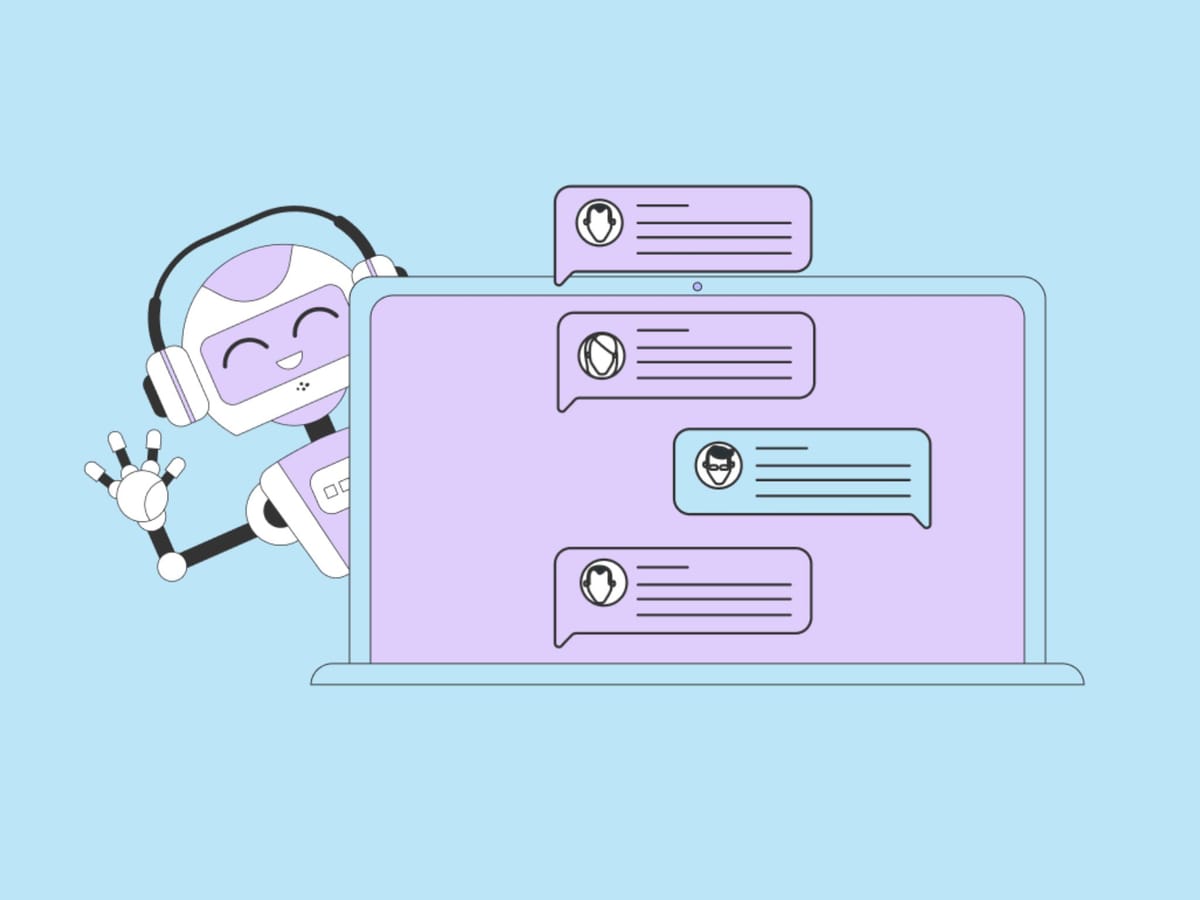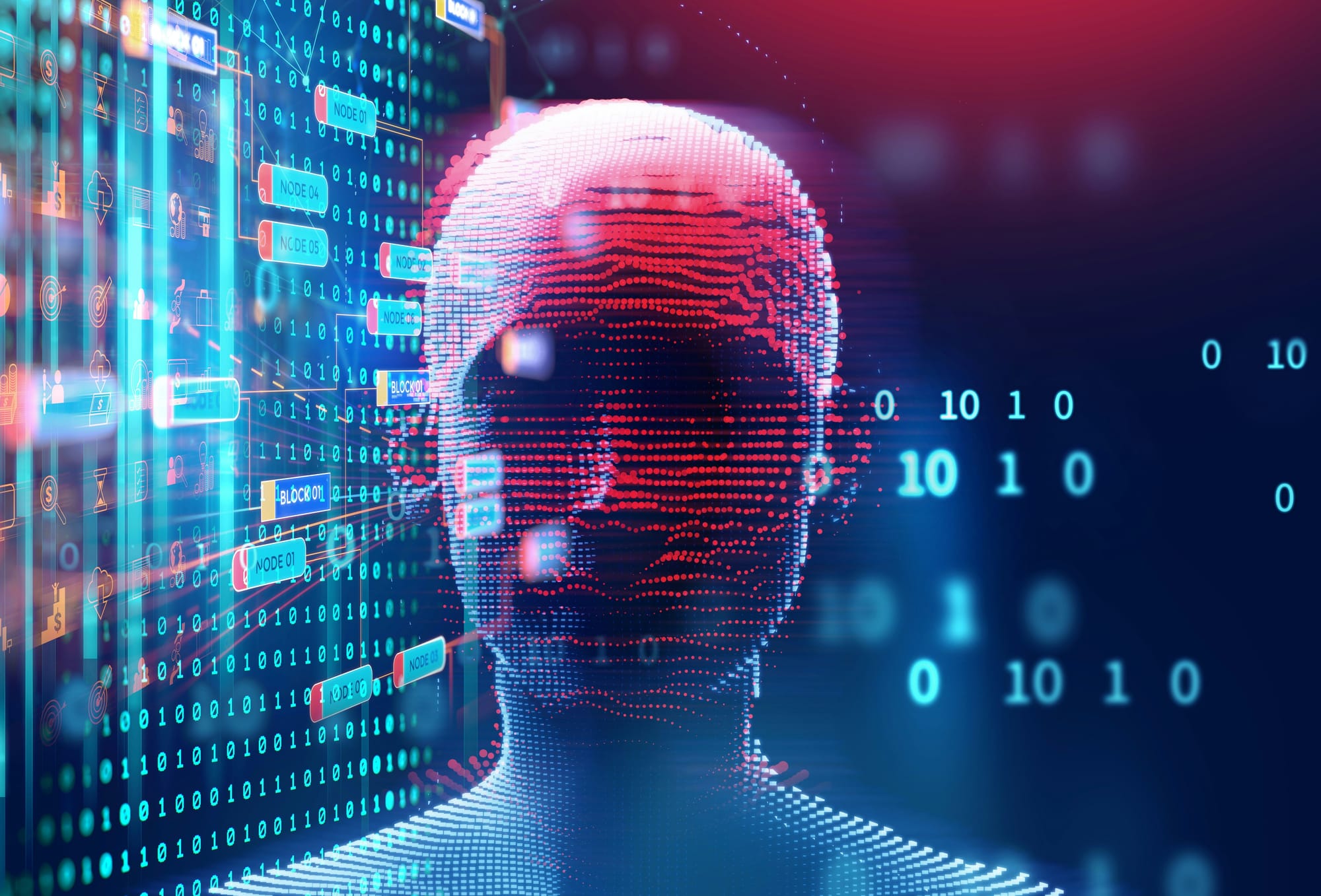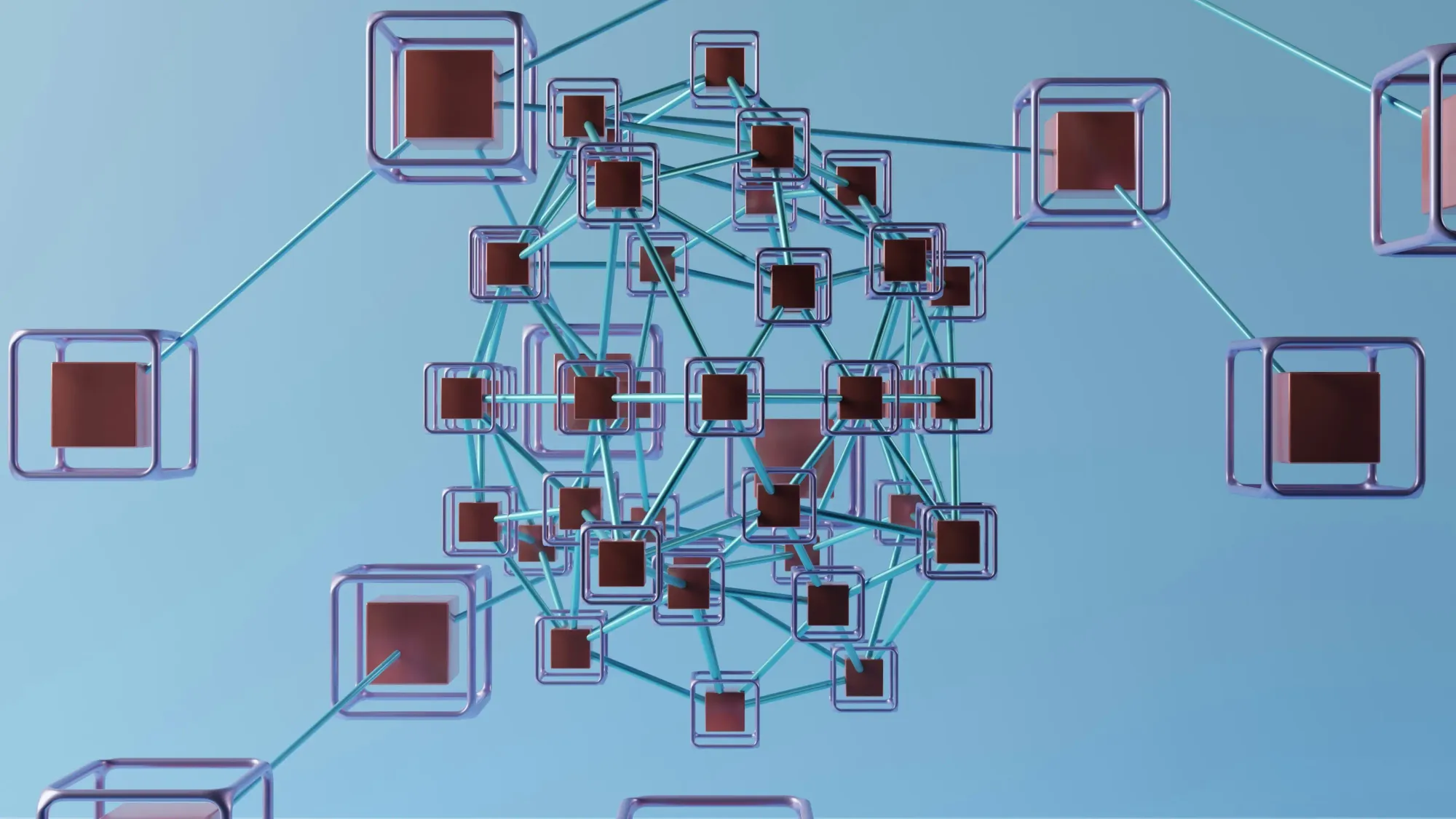As we approach 2026, artificial intelligence continues its remarkable transformation across industries, promising unprecedented breakthroughs while presenting new challenges. The convergence of advanced computing power, sophisticated algorithms, and vast data resources is creating a perfect storm for AI innovation that will fundamentally reshape how we work, live, and interact with technology.
Understanding AI trends and predictions for 2026 isn't just about staying informed—it's about preparing for a future where artificial intelligence becomes as ubiquitous as the internet is today. From personalized healthcare solutions to autonomous transportation networks, the AI revolution is set to accelerate dramatically over the next two years.
The Current AI Landscape: Setting the Stage for 2026
The artificial intelligence ecosystem in 2024-2025 represents a critical inflection point in technological history. We're witnessing the maturation of technologies that were experimental just five years ago, while simultaneously seeing the emergence of entirely new AI paradigms that will define the decade ahead.
Current AI systems have already achieved remarkable milestones in natural language understanding, image recognition, and predictive analytics. However, these achievements represent merely the foundation for what's coming. The AI models powering today's applications are becoming increasingly sophisticated, efficient, and accessible, creating conditions for widespread adoption across industries that have traditionally been slow to embrace new technologies.
| Era | Time Period | Key Characteristics | Major Developments |
|---|---|---|---|
| Foundation | 1950s-1960s | Theoretical research and early programs | Alan Turing's work, first AI programs |
| AI Winter | 1970s-1980s | Reduced funding and limited applications | Decreased investment, slower progress |
| Internet Revival | 1990s-2000s | Increased computing power and connectivity | Internet growth, improved algorithms |
| Deep Learning Revolution | 2010s-2020s | Neural networks and big data analytics | Breakthrough in pattern recognition |
| Autonomous Intelligence | 2026+ | Quantum-AI integration and AGI development | Self-improving systems, quantum computing |
The momentum building toward 2026 is driven by several convergent factors. Computing infrastructure has reached unprecedented levels of sophistication, with cloud platforms providing virtually unlimited scalability for AI workloads. Data availability has exploded across every sector, creating rich training grounds for machine learning algorithms. Perhaps most importantly, the talent pool of AI researchers, engineers, and practitioners has grown exponentially, bringing diverse perspectives and expertise to complex challenges.
Breakthrough Technologies Reshaping AI in 2026
Advanced Neural Architectures and Quantum Integration
The landscape of machine learning architectures is undergoing a fundamental transformation that will reach full maturity by 2026. Traditional deep learning models, while powerful, are giving way to more sophisticated approaches that combine multiple AI paradigms in novel ways.
Neuromorphic computing represents one of the most significant developments in this space. These brain-inspired architectures promise to deliver AI capabilities with dramatically reduced energy consumption while maintaining or exceeding current performance levels. By 2026, we expect neuromorphic chips to power everything from smartphone AI assistants to large-scale data center operations.
Quantum-enhanced machine learning is another frontier showing immense promise. While fully functional quantum computers remain limited in scope, quantum-classical hybrid systems are already demonstrating superior performance in specific AI applications. By 2026, these hybrid approaches will likely revolutionize optimization problems, cryptography, and complex simulation tasks that are currently beyond the reach of classical computing.
Natural Language Processing: Approaching Human Parity
The evolution of natural language processing represents perhaps the most visible and impactful area of AI advancement heading into 2026. Current large language models have already demonstrated remarkable capabilities in understanding and generating human-like text, but the next generation of NLP systems will transcend these achievements in fundamental ways.
Context awareness represents a critical breakthrough area. While today's AI systems can maintain context within a single conversation or document, 2026 systems will demonstrate persistent, multi-modal context awareness across extended interactions and diverse information sources. This capability will enable AI assistants that truly understand user preferences, work contexts, and long-term objectives.
The implications extend far beyond improved chatbots or writing assistants. Advanced NLP will enable AI systems to process and synthesize information from vast repositories of human knowledge, creating new possibilities for research, education, and decision-making across every field of human endeavor.
Key NLP Advancements Expected by 2026:
- Real-time multilingual communication without translation delays
- Context-aware content generation tailored to specific audiences
- Advanced reasoning capabilities approaching human-level comprehension
- Emotional intelligence and empathetic response generation
Autonomous Systems: From Experimental to Essential
Autonomous systems represent one of the most transformative applications of AI technology, with 2026 marking a crucial transition from experimental deployments to widespread practical adoption. This evolution encompasses not just self-driving vehicles, but entire ecosystems of interconnected autonomous agents working together to optimize complex operations.
Transportation networks will undergo their most significant transformation since the advent of the automobile. Autonomous vehicles will achieve Level 4 and Level 5 autonomy in specific geographic regions, operating safely in complex urban environments without human intervention. More importantly, these vehicles will be integrated into intelligent transportation networks that optimize traffic flow, reduce emissions, and improve safety through coordinated decision-making.
The impact extends beyond personal transportation. Autonomous delivery systems, from ground-based robots to aerial drones, will revolutionize logistics and supply chain operations. By 2026, same-day autonomous delivery will become standard in major metropolitan areas, fundamentally changing consumer expectations and business models.
Industry Transformations: Where AI Makes the Greatest Impact
Healthcare: Precision Medicine Becomes Reality
The healthcare industry stands at the threshold of an AI-driven revolution that will fundamentally alter how medical care is delivered, diseases are diagnosed, and treatments are developed. By 2026, artificial intelligence will not be an experimental addition to healthcare—it will be an integral component of medical practice.
Personalized medicine represents the most significant opportunity for AI transformation in healthcare. Advanced algorithms will analyze genetic profiles, lifestyle factors, environmental exposures, and medical histories to create unprecedented levels of treatment personalization. This approach will move beyond simple risk assessment to provide precise therapeutic recommendations that account for individual patient variability in drug metabolism, immune response, and disease progression.
AI-Powered Personalized Medicine Workflow:
| Input Data | AI Processing | Output Results | Patient Benefits |
|---|---|---|---|
| Genetic Profile | Pattern Recognition | Treatment Recommendations | Targeted Therapy |
| Medical History | Predictive Modeling | Drug Interactions | Safer Medications |
| Lifestyle Factors | Risk Analysis | Monitoring Protocols | Preventive Care |
| Environmental Data | Outcome Prediction | Risk Assessments | Early Detection |
The AI analysis engine processes multiple data sources simultaneously to generate comprehensive, personalized healthcare solutions that improve patient outcomes while reducing adverse effects.
Drug discovery and development, traditionally one of the most time-consuming and expensive aspects of healthcare innovation, will be dramatically accelerated through AI applications. Machine learning algorithms will identify promising therapeutic compounds, predict their efficacy and safety profiles, and optimize clinical trial designs. This acceleration could reduce the typical 10-15 year drug development timeline to 5-7 years for many treatments.
Diagnostic capabilities will reach new levels of accuracy and speed. AI-powered imaging systems will detect diseases at earlier stages than human radiologists, while continuous monitoring systems will identify health deterioration before symptoms become apparent. Emergency medicine will be transformed through AI systems that can rapidly analyze patient data and recommend treatment protocols, potentially saving thousands of lives annually.
Financial Services: Intelligence-Driven Decision Making
The financial services industry is experiencing a fundamental shift toward AI-driven operations that will reach full maturity by 2026. This transformation extends far beyond simple automation to encompass sophisticated decision-making systems that can process vast amounts of market data, assess complex risks, and execute strategies with superhuman speed and precision.
Fraud detection represents an area where AI has already demonstrated significant value, but 2026 systems will operate at entirely new levels of sophistication. These systems will analyze behavioral patterns, transaction networks, and contextual information in real-time to identify fraudulent activities with near-perfect accuracy while minimizing false positives that inconvenience legitimate customers.
Algorithmic trading will evolve from simple rule-based systems to sophisticated AI agents capable of developing and executing complex trading strategies. These systems will incorporate natural language processing to analyze news, social media sentiment, and regulatory announcements, while using advanced predictive models to identify market opportunities that human traders might miss.
Risk management will become increasingly predictive rather than reactive. AI systems will continuously assess portfolio risks, market conditions, and regulatory changes to provide real-time recommendations for risk mitigation. This capability will enable financial institutions to maintain optimal risk-reward profiles while adapting quickly to changing market conditions.
The democratization of financial services through AI will create new opportunities for personalized financial advice and investment management. Robo-advisors will become sophisticated enough to provide comprehensive financial planning services that rival human advisors, making professional financial guidance accessible to a much broader population.
Manufacturing: The Smart Factory Revolution
Manufacturing represents one of the most immediate and impactful applications of AI technology, with smart factories becoming the norm rather than the exception by 2026. This transformation encompasses not just individual automated processes, but entire production ecosystems that can adapt, optimize, and self-improve in real-time.
Predictive maintenance will eliminate the majority of unexpected equipment failures through continuous monitoring and analysis of machine performance data. AI systems will identify subtle patterns indicating impending failures, allowing maintenance to be scheduled proactively rather than reactively. This capability will dramatically reduce downtime costs while extending equipment lifespan.
Quality control will achieve near-perfect accuracy through computer vision systems that can detect defects invisible to human inspectors. These systems will not only identify problems but also trace their root causes back through the production process, enabling continuous improvement of manufacturing procedures.
Supply chain optimization will reach new levels of efficiency through AI systems that can predict demand fluctuations, optimize inventory levels, and coordinate with suppliers in real-time. These capabilities will enable manufacturers to operate with minimal waste while maintaining high service levels even during periods of demand volatility.
AI Investment Priorities by Sector (2024-2026)
| Industry Sector | Primary AI Applications | Investment Level | Expected ROI |
|---|---|---|---|
| Healthcare | Diagnostics, drug discovery, personalized medicine | Very High | 300-500% |
| Financial Services | Fraud detection, algorithmic trading, risk management | High | 200-400% |
| Manufacturing | Predictive maintenance, quality control, automation | High | 250-350% |
| Transportation | Autonomous vehicles, logistics optimization | Very High | 400-600% |
| Education | Personalized learning, intelligent tutoring | Medium | 150-250% |
| Retail/E-commerce | Recommendation systems, demand forecasting | Medium | 200-300% |
Note: ROI percentages represent projected returns over 3-5 years based on current industry analysis and expert predictions. Actual results may vary based on implementation quality and market conditions.
Education: Personalized Learning at Scale
The education sector is poised for a transformation that will make personalized learning accessible to every student, regardless of location or economic circumstances. AI-powered educational systems will adapt to individual learning styles, paces, and interests while providing educators with unprecedented insights into student progress and potential areas for intervention.
Intelligent tutoring systems will provide 24/7 support to students, offering personalized explanations, practice problems, and feedback tailored to each individual's needs. These systems will identify knowledge gaps in real-time and provide targeted interventions to ensure no student falls behind.
Content creation and curation will be revolutionized through AI systems that can generate educational materials, assessments, and learning activities customized for specific learning objectives and student populations. This capability will dramatically reduce the burden on educators while ensuring that learning materials remain current and relevant.
Assessment and evaluation will become continuous rather than episodic, with AI systems providing ongoing feedback to both students and educators about learning progress. This approach will enable early identification of learning difficulties and allow for timely interventions to keep students on track.
Critical Challenges and Obstacles to Overcome
Ethical Implications and Social Responsibility
As AI systems become more powerful and pervasive, addressing ethical implications becomes increasingly critical for ensuring that artificial intelligence serves humanity's best interests. The challenges in this domain are complex and multifaceted, requiring careful consideration of competing values and interests.
Algorithmic bias remains one of the most pressing concerns facing AI development. Despite significant attention and resources dedicated to this problem, achieving truly fair and unbiased AI systems continues to prove elusive. The challenge extends beyond technical solutions to encompass broader questions about how we define fairness and what trade-offs we're willing to accept in pursuit of equitable outcomes.
Privacy and data security concerns will only intensify as AI systems require access to increasingly personal and sensitive information to deliver personalized services. Balancing the benefits of AI-driven personalization with individual privacy rights requires sophisticated technical solutions and thoughtful regulatory frameworks.
The impact on employment represents perhaps the most socially significant challenge associated with AI advancement. While AI will undoubtedly create new job categories and opportunities, it will also eliminate many existing roles. Managing this transition requires proactive workforce development, social safety nets, and potentially new economic models for distributing the benefits of AI-driven productivity gains.
Critical AI Challenges by Category
| Challenge Category | Primary Concerns | Impact Level | Timeline for Resolution |
|---|---|---|---|
| Algorithmic Bias | Fair representation, equal outcomes | High | 2-3 years |
| Privacy & Security | Data protection, consent management | Critical | Ongoing |
| Employment Impact | Job displacement, skills gap | High | 5-10 years |
| Accountability | Decision transparency, liability | Medium | 3-5 years |
| Technical Limitations | Scalability, integration complexity | Medium | 2-4 years |
These challenges require coordinated efforts from technology companies, governments, and civil society to ensure AI development benefits all stakeholders while minimizing potential harm.
Technical Hurdles and Limitations
Despite remarkable progress in AI capabilities, significant technical challenges remain that will influence the pace and direction of AI development through 2026. These limitations span computational resources, data quality, and fundamental algorithmic constraints that current approaches cannot easily overcome.
Computational scalability represents an ongoing challenge as AI models continue to grow in size and complexity. While cloud computing provides virtually unlimited resources in principle, the environmental impact and economic costs of training and deploying large AI models raise questions about the sustainability of current approaches.
Data quality and availability issues persist across many domains, limiting the effectiveness of AI systems in areas where high-quality training data is scarce or expensive to obtain. This challenge is particularly acute in specialized fields such as medical diagnosis for rare diseases or predictive modeling for extreme weather events.
Integration complexity remains a significant barrier to AI adoption in many organizations. Incorporating AI systems into existing workflows, ensuring compatibility with legacy systems, and maintaining reliability during the integration process requires sophisticated technical expertise that many organizations lack.

Security and Safety Considerations
As AI systems become more capable and autonomous, ensuring their security and safety becomes increasingly critical for maintaining public trust and preventing catastrophic failures. The challenges in this domain are evolving rapidly as new attack vectors emerge and the potential consequences of AI system failures grow more severe.
AI-powered cybersecurity threats represent a new category of risk that traditional security measures are not designed to address. Sophisticated attackers can use AI to automate the discovery of vulnerabilities, generate convincing phishing content, and adapt their strategies in real-time to evade detection systems.
The security of AI systems themselves presents unique challenges. Adversarial attacks, where maliciously crafted inputs cause AI systems to make incorrect decisions, could have severe consequences in critical applications such as autonomous vehicles or medical diagnosis systems.
Ensuring the safety of increasingly autonomous AI systems requires new approaches to system design, testing, and monitoring. Traditional software testing methods are insufficient for AI systems that learn and adapt over time, necessitating new methodologies for ensuring safe operation in dynamic environments.
Regulatory Landscape and Governance Evolution
International Cooperation and Standards Development
The global nature of AI development and deployment necessitates international cooperation on regulatory frameworks and technical standards. By 2026, we expect to see significant progress in establishing common principles and practices that enable innovation while protecting individual rights and societal interests.
International standards organizations are already working to develop technical specifications for AI systems, covering areas such as data quality, algorithm transparency, and safety assessment procedures. These standards will become increasingly important as AI systems are deployed across national boundaries and in multinational organizations.
Cross-border data sharing and AI system interoperability will require harmonized regulatory approaches that balance national sovereignty with the benefits of global collaboration. This challenge is particularly acute in areas such as healthcare research and climate modeling, where international cooperation is essential for addressing global challenges.
The development of common ethical frameworks for AI will enable more consistent approaches to addressing bias, privacy, and accountability concerns across different jurisdictions. While cultural and legal differences will prevent complete harmonization, establishing basic principles and procedures will facilitate international cooperation and commerce.
Balancing Innovation with Protection
Regulatory approaches to AI must strike a careful balance between enabling innovation and protecting individual and societal interests. This balance is particularly challenging given the rapid pace of technological change and the difficulty of predicting the long-term consequences of current developments.
Regulatory sandboxes and experimental zones will become more common as governments seek to understand the implications of new AI technologies before establishing comprehensive regulations. These approaches allow controlled testing of innovative AI applications while gathering data on their effects and developing appropriate governance frameworks.
Risk-based regulatory approaches will focus resources on AI applications with the greatest potential for harm while allowing lower-risk applications to develop with minimal regulatory constraints. This approach requires sophisticated risk assessment capabilities and ongoing monitoring of AI system performance and impacts.
Adaptive regulation that can evolve with technological developments will be essential for maintaining effective governance of AI systems. Traditional regulatory approaches that establish fixed rules may become obsolete quickly given the pace of AI advancement, necessitating more flexible and responsive governance mechanisms.
Preparing for the AI-Driven Future of 2026
Strategic Workforce Development
Preparing for an AI-driven economy requires fundamental changes in how we approach education, training, and career development. The workforce of 2026 will need different skills and capabilities than today's workers, necessitating proactive adaptation across educational institutions, employers, and individuals.
Educational curricula must evolve to emphasize skills that complement rather than compete with AI capabilities. Critical thinking, creativity, emotional intelligence, and complex problem-solving will become increasingly valuable as routine cognitive tasks become automated. STEM education remains important, but it must be supplemented with strong foundations in ethics, communication, and interdisciplinary collaboration.
Continuous learning and reskilling will become essential throughout career lifecycles as the pace of technological change accelerates. Organizations will need to invest heavily in employee development programs that can adapt quickly to changing skill requirements and technological capabilities.
The emergence of human-AI collaboration as a fundamental work paradigm will require new types of training that help workers understand how to effectively partner with AI systems. This includes not only technical skills for using AI tools but also the judgment needed to know when to trust or override AI recommendations.
Essential Skills for the AI-Driven Workforce:
- AI literacy and human-machine collaboration techniques
- Data interpretation and critical analysis capabilities
- Creative problem-solving and innovation methodologies
- Ethical reasoning and responsible technology use
- Adaptive learning and continuous skill development
Organizational Transformation Strategies
Organizations across all sectors must begin preparing now for the AI-transformed landscape of 2026. This preparation encompasses not only technology adoption but also fundamental changes in organizational structure, culture, and strategy.
Technology infrastructure must be designed with AI integration in mind from the beginning rather than as an afterthought. This includes not only computational resources but also data management systems, security protocols, and integration capabilities that can support sophisticated AI applications.
Cultural transformation may be even more important than technical preparation. Organizations must develop cultures that embrace experimentation, continuous learning, and human-AI collaboration while maintaining strong ethical foundations and respect for human dignity.
Strategic planning must account for both the opportunities and risks associated with AI adoption. This includes identifying specific use cases where AI can create competitive advantages while also preparing for potential disruptions to existing business models and value propositions.
Change management processes must be designed to handle the ongoing nature of AI-driven transformation rather than one-time technology implementations. The continuous evolution of AI capabilities means that organizations must develop capabilities for perpetual adaptation and improvement.
Building Public Trust and Understanding
The success of AI development ultimately depends on public acceptance and trust, which requires ongoing efforts to educate citizens about AI capabilities and limitations while addressing legitimate concerns about its societal impacts.
Public education initiatives must go beyond simple awareness campaigns to provide citizens with the knowledge and skills needed to make informed decisions about AI technologies. This includes understanding how AI systems work, what data they use, and how their decisions can be challenged or appealed.
Transparency in AI development and deployment will be essential for maintaining public trust. Organizations developing AI systems must be willing to explain how their systems work, what data they use, and what safeguards are in place to prevent misuse or bias.
Democratic participation in AI governance will ensure that technological development serves broader societal interests rather than narrow commercial or political objectives. This requires creating mechanisms for public input on AI policies and engaging diverse stakeholders in discussions about AI's future direction.
Looking Ahead: The Long-term Vision for AI
Economic and Social Transformation
The AI developments leading to 2026 represent just the beginning of a much larger transformation that will unfold over the coming decades. Understanding this longer-term trajectory is essential for making informed decisions about current investments and policies.
Economic productivity gains from AI will likely exceed historical precedents, potentially enabling unprecedented levels of prosperity while also creating new forms of inequality. Managing this transformation will require new economic models that can distribute the benefits of AI-driven productivity more equitably across society.
Social structures and institutions will need to evolve to accommodate the changes brought by AI integration. This includes everything from educational systems and employment practices to legal frameworks and democratic processes.
The relationship between humans and AI systems will continue to evolve from one of tool use to genuine partnership and collaboration. This evolution will require new frameworks for understanding agency, responsibility, and the nature of intelligence itself.
Global Competition and Cooperation
The AI race between nations and organizations will intensify through 2026 and beyond, with significant implications for global power structures and international relations. Success in AI development will increasingly determine economic competitiveness and national security capabilities.
International cooperation on AI research and development will be essential for addressing global challenges such as climate change, disease, and poverty. The most significant breakthroughs may come from collaborative efforts that pool resources and expertise across national boundaries.
The governance of AI will require new forms of international cooperation and coordination to ensure that the benefits of AI development are shared broadly while minimizing risks to global stability and security.
Sum up
As we stand on the threshold of 2026, artificial intelligence represents both humanity's greatest opportunity and its most significant challenge. The trends and predictions outlined in this comprehensive analysis point toward a future where AI becomes deeply integrated into every aspect of human society, from healthcare and education to transportation and entertainment.
The path forward requires unprecedented collaboration between technologists, policymakers, educators, and citizens to ensure that AI development serves humanity's best interests. Success will depend on our ability to foster innovation while maintaining ethical standards, to embrace change while protecting vulnerable populations, and to compete while cooperating on global challenges.
The AI revolution of 2026 will not be a single event but an ongoing transformation that requires continuous adaptation and learning. Organizations, governments, and individuals who begin preparing now will be best positioned to thrive in this new landscape, while those who wait risk being left behind by the rapid pace of change.
By taking proactive steps to address the challenges and embrace the opportunities presented by AI advancement, we can ensure that 2026 marks not just a technological milestone but a turning point toward a more prosperous, equitable, and sustainable future for all humanity. The choices we make today will determine whether the AI revolution becomes a force for human flourishing or a source of division and disruption.
The future of AI in 2026 is not predetermined—it will be shaped by the decisions, investments, and values we embrace today. By working together to guide AI development in positive directions, we can harness its transformative potential while preserving the human values and dignity that define our civilization.
Related Articles & Suggested Reading



















